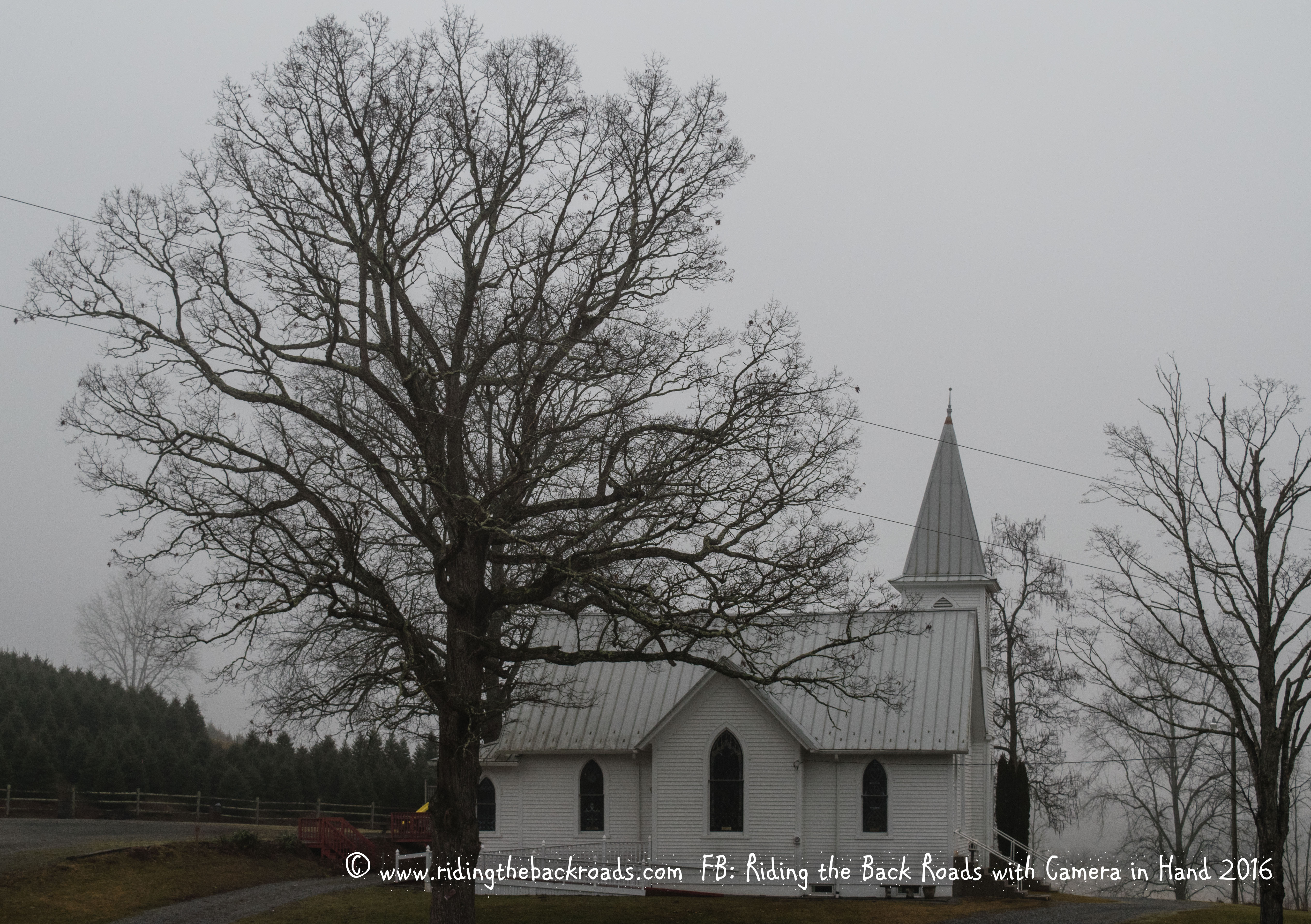|
Appalachian Bogs
Appalachian bogs are boreal or hemiboreal ecosystems, which occur in many places in the Appalachian Mountains, particularly the Allegheny Mountains, Allegheny and Blue Ridge Mountains, Blue Ridge subranges. Though popularly called bogs, many of them are technically fens. Natural history After the Pleistocene ice ages, species and ecosystems that had shifted southward often survived in local refugium (population biology), refugia. As a result, cold-adapted ecosystems, such as bogs, remain as far south as East Tennessee and Western North Carolina. Development of land has greatly reduced both the number and acreage of the bogs in North Carolina. Bog ecosystems evolved in humid cold temperate regions and are generally ombrotrophic which means the system is dependent on precipitation for moisture and nutrient inputs. Shady Valley bogs Situated between Holston Mountain and the Iron Mountains, the community of Shady Valley, Tennessee, once contained an estimated 10,000 acres (40 ... [...More Info...] [...Related Items...] OR: [Wikipedia] [Google] [Baidu] |
Restoration Ecology
Ecological restoration, or ecosystem restoration, is the process of assisting the recovery of an ecosystem that has been degraded, damaged, destroyed or transformed. It is distinct from Conservation movement, conservation in that it attempts to retroactively repair already damaged ecosystems rather than take preventative measures. Ecological restoration can help to reverse biodiversity loss, combat climate change, support the provision of ecosystem services and support local economies. The United Nations has named 2021–2030 the Decade on Ecosystem Restoration. Habitat restoration involves the deliberate rehabilitation of a specific area to reestablish a functional ecosystem. This may differ from historical baselines (the ecosystem's original condition at a particular point in time). To achieve successful habitat restoration, it is essential to understand the life cycles and interactions of species, as well as the essential elements such as food, water, nutrients, space, and s ... [...More Info...] [...Related Items...] OR: [Wikipedia] [Google] [Baidu] |
Outcropping
An outcrop or rocky outcrop is a visible exposure of bedrock or ancient superficial deposits on the surface of the Earth and other terrestrial planets. Features Outcrops do not cover the majority of the Earth's land surface because in most places the bedrock or superficial deposits are covered by soil and vegetation and cannot be seen or examined closely. However, in places where the overlying cover is removed through erosion or tectonic uplift, the rock may be exposed, or ''crop out''. Such exposure will happen most frequently in areas where erosion is rapid and exceeds the weathering rate such as on steep hillsides, mountain ridges and tops, river banks, and tectonically active areas. In Finland, glacial erosion during the last glacial maximum (ca. 11000 BC), followed by scouring by sea waves, followed by isostatic uplift has produced many smooth coastal and littoral outcrops. Bedrock and superficial deposits may also be exposed at the Earth's surface due to human excavation ... [...More Info...] [...Related Items...] OR: [Wikipedia] [Google] [Baidu] |
Granite
Granite ( ) is a coarse-grained (phanerite, phaneritic) intrusive rock, intrusive igneous rock composed mostly of quartz, alkali feldspar, and plagioclase. It forms from magma with a high content of silica and alkali metal oxides that slowly cools and solidifies underground. It is common in the continental crust of Earth, where it is found in igneous intrusions. These range in size from dike (geology), dikes only a few centimeters across to batholiths exposed over hundreds of square kilometers. Granite is typical of a larger family of ''granitic rocks'', or ''granitoids'', that are composed mostly of coarse-grained quartz and feldspars in varying proportions. These rocks are classified by the relative percentages of quartz, alkali feldspar, and plagioclase (the QAPF diagram, QAPF classification), with true granite representing granitic rocks rich in quartz and alkali feldspar. Most granitic rocks also contain mica or amphibole minerals, though a few (known as leucogranites) conta ... [...More Info...] [...Related Items...] OR: [Wikipedia] [Google] [Baidu] |
Northeastern Pennsylvania
Northeastern Pennsylvania (NEPA or Nepa) is a region of the U.S. state of Pennsylvania that includes the Pocono Mountains, the Endless Mountains, and the industrial cities of Scranton (the area's largest city), Wilkes-Barre, Pittston, Hazleton, Nanticoke, and Carbondale. A portion of this region is located in the New York City metropolitan area. Recently, Pennsylvania tourism boards have described Northeastern Pennsylvania as Upstate Pennsylvania. Unlike most other parts of the Rust Belt, some of the communities are experiencing a modest population increase, and others, including Monroe and Pike counties, rank among the state's fastest growing counties. Northeastern Pennsylvania borders the Pennsylvania Wilds to the west, the New York State Southern Tier and Hudson Valley regions to the north and northeast, Sussex and Warren counties in New Jersey to the east, and the Lehigh Valley to the south. Area References to Northeastern Pennsylvania frequently include ... [...More Info...] [...Related Items...] OR: [Wikipedia] [Google] [Baidu] |
Tannersville Cranberry Bog
The Tannersville Cranberry Bog or Cranberry Swamp is a sphagnum bog on the Cranberry Creek in Tannersville, Pocono Township, Monroe County, Pennsylvania. It is the southernmost boreal bog east of the Mississippi River, containing many black spruce and tamarack trees at the southern limit of their ranges. Technically, it can be classed as an acid fen, as it receives some groundwater flow. The site was designated a National Natural Landmark in December 1974. It was purchased by The Nature Conservancy and the Conservation and Research Foundation in 1957. Like many bogs, its terrain presents an image of solidity, but a liquid mass of decaying peat lies beneath a six-inch (152 mm) layer of sphagnum and a network of supporting tree roots. However, this bog may be viewed from a floating walkway. History The bog began as a "kettle lake" formed approximately 10,000 years ago by a portion of the retreating Wisconsin Glacier, which initially covered a depth up to the top o ... [...More Info...] [...Related Items...] OR: [Wikipedia] [Google] [Baidu] |
West Branch Susquehanna Valley
The West Branch Susquehanna Valley of central Pennsylvania, United States, in the Ridge-and-valley Appalachians, is the low-lying area draining into the West Branch Susquehanna River southeast of the Allegheny Front, northeast of the Bald Eagle Valley, southwest of the Wyoming Valley and north of the water gap formed between Shamokin Mountain and Montour Ridge. The river enters the valley after emerging from a deep gorge in the Allegheny Plateau above Lock Haven, then turns east entering a broad alluvial flood plain, where it receives the Bald Eagle Creek after passing the town. The flood plain lies at the foot of the Bald Eagle Mountain ridge, with large fertile farm fields in and around the river's meanders and islands. The valley above the flood plain is a series of knolls below the plateau. Further down the valley, the river receives Pine Creek which has also entered the valley from a deep gorge, Pine Creek Gorge (also known as the Grand Canyon of Pennsylvania). East of ... [...More Info...] [...Related Items...] OR: [Wikipedia] [Google] [Baidu] |
Tamarack Swamp
Tamarack Swamp Natural Area is a boreal (non-glacial) bog in Sproul State Forest, in Clinton County, Pennsylvania, United States. It is named for the tamarack tree that is common in the surrounding wetland. The protected natural area consists of 267 acres within the larger Tamarack Swamp complex. Tamarack Swamp is considered an Important Bird Area by Audubon Pennsylvania, and was named as one of the top 100 birding sites in Pennsylvania by the Pennsylvania Game Commission. Location and history Tamarack Swamp is located in northern Clinton County, Pennsylvania, northeast of the community of Tamarack and accessible via Pennsylvania Route 144, which passes near the western edge of the wetland. The wetland has a total area of 4000 acres, and serves as the headwaters of Drury Run. Tamarack Swamp is home to the tamarack tree, which is the only deciduous conifer in Pennsylvania. In about 1827, Alexander Kelly, Montgomery Kelly, George Kelly, and Samuel Kelly settled on the we ... [...More Info...] [...Related Items...] OR: [Wikipedia] [Google] [Baidu] |
Ashe County, North Carolina
Ashe County ( ) is a County (United States), county located in the U.S. state of North Carolina. The population was 26,577 at the 2020 United States census, 2020 census. Its county seat is Jefferson, North Carolina, Jefferson. History Historical evidence shows that Ashe County was inhabited by Native Americans in the United States, Native Americans, which included the Cherokee, Creek people, Creek, and Shawnee tribes. Pieces of broken pottery, arrowheads, and other Native American artifacts have been found, indicating their presence. Most of these artifacts have been found in the Old Fields area of Ashe County. The earliest Europeans to explore Ashe County were Bishop August Gottlieb Spangenberg – head of the Moravian Church in America – and his associates, Timothy Horsefield, Joseph Mueller, Henry Antes, Johan Merck, and Herman Loesch. Bishop Spangenberg wrote about his journey in Ashe in a diary that has been preserved by the Moravian church. He was given in Virginia ... [...More Info...] [...Related Items...] OR: [Wikipedia] [Google] [Baidu] |
Mountain Bogs National Wildlife Refuge
The Mountain Bogs National Wildlife Refuge is a federally protected wildlife refuge located within multiple western North Carolina counties, United States. The refuge has a total area of over consisting of fee title and conservation easements on privately owned property. In order to respect the wishes of the landowner, and protect sensitive habitat, the refuge is currently not open to the public. The refuge was established in 2015 to conserve Southern Appalachian Bogs in North Carolina and Tennessee, and the U.S. Fish and Wildlife Service plans to add more sites to the refuge, by working with willing landowners. As of March 2025, portions of 14 North Carolina counties and two Tennessee counties are within the Mountain Bogs National Wildlife Refuge. The reserve protects habitat for multiple threatened and endangered species, migratory birds, and important game species. Mountain Bogs NWF is managed by the Piedmont National Wildlife Refuge. Counties North Carolina * All ... [...More Info...] [...Related Items...] OR: [Wikipedia] [Google] [Baidu] |
Garrett County, Maryland
Garrett County () is the westernmost county of the U.S. state of Maryland, completely within the Appalachian Mountains. As of the 2020 United States census, the population was 28,806, making it the third-least populous county in Maryland. Its county seat is Oakland. The county was named for John Work Garrett (1820–1884), president of the Baltimore and Ohio Railroad. Created from Allegany County in 1872, it was the last county to be formed in the state. The county is part of the Western Maryland region of the state. Garrett County is bordered by four West Virginia counties and to the north the Maryland–Pennsylvania boundary known as the Mason–Dixon line. The eastern border with Allegany County was defined by the Bauer Report, submitted to Governor Lloyd Lowndes, Jr. on November 9, 1898. The Potomac River and State of West Virginia lie to the south and west. Garrett County lies in the Allegheny Mountains, which here form the western flank of the Appalachian ... [...More Info...] [...Related Items...] OR: [Wikipedia] [Google] [Baidu] |
Preston County, West Virginia
Preston County is a County (United States), county located in the U.S. state of West Virginia. As of the 2020 United States census, 2020 Census, the population was 34,216. Its county seat is Kingwood, West Virginia, Kingwood. The county was formed from Monongalia County, West Virginia, Monongalia County in 1818 and named for Virginia Governor James Patton Preston. Preston County is part of the Morgantown metropolitan area, Morgantown, WV Metropolitan Statistical Area, and is the southernmost county of the Pittsburgh DMA, Pittsburgh media market. It is the home of The Buckwheat Festival, a county fair known for making buckwheat pancakes. History Native Americans lived in (and traveled through) what would one day become Preston County; they crossed-over from the Ohio River watershed, which drains into the Mississippi River, into the Chesapeake Bay watershed. From 1736, European traders and explorers lived in the County, and one boundary stone was laid in 1746—the Fairfax Stone ... [...More Info...] [...Related Items...] OR: [Wikipedia] [Google] [Baidu] |




